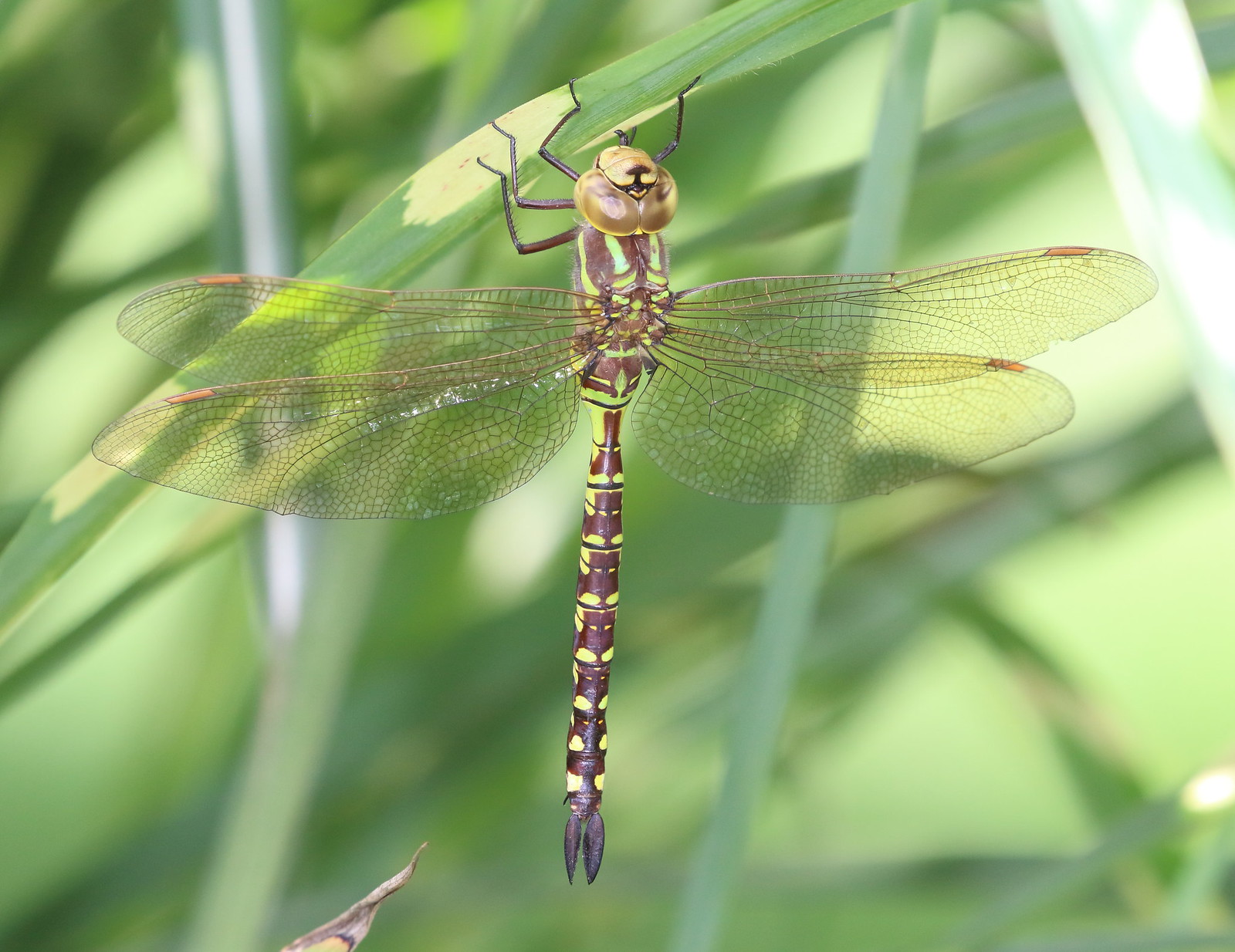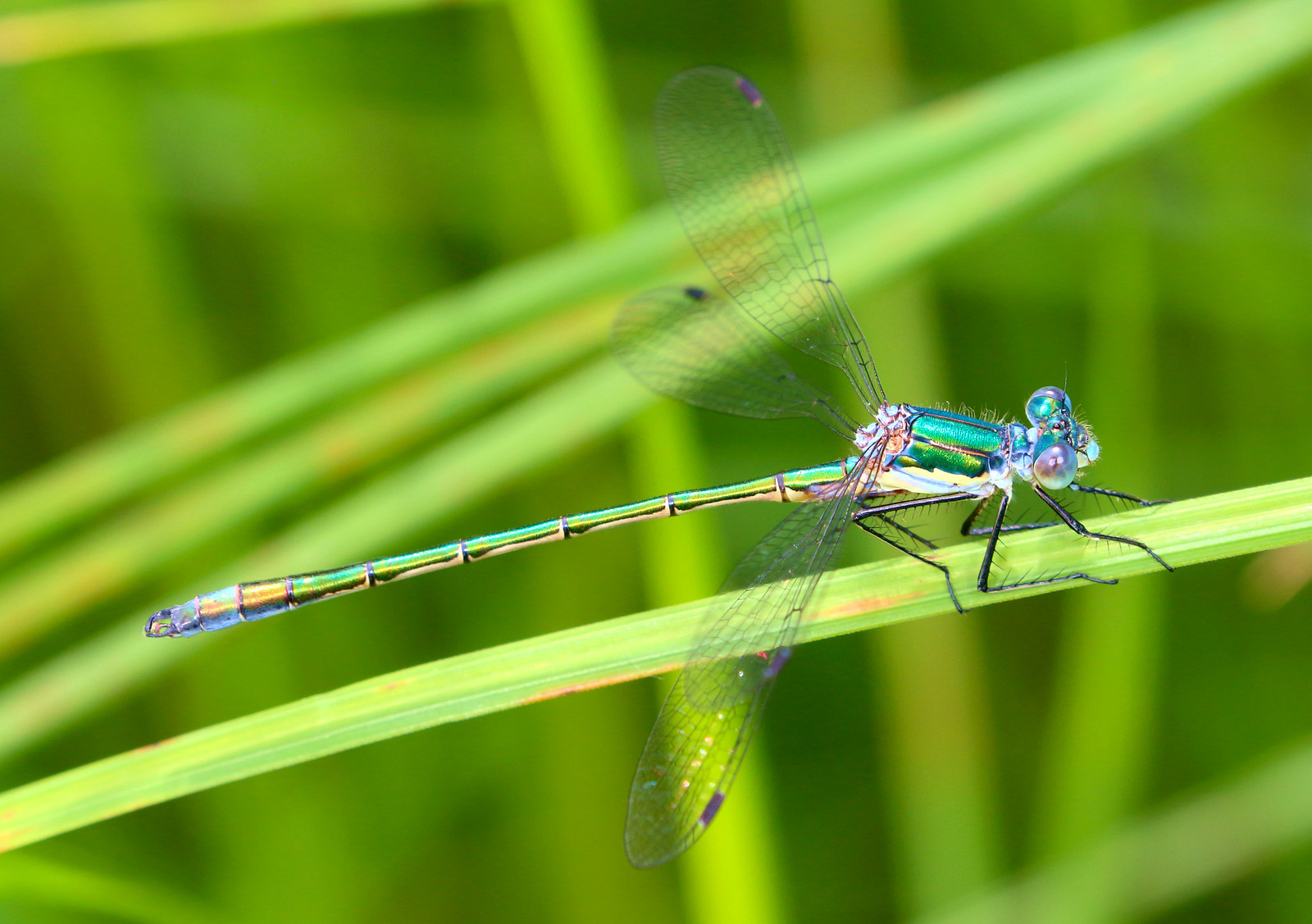Dragonfly summer, part III
Mar 30, 2020 02:03:14 #
Hello! I hope you like dragonflies. 🙂
First up is a male flame skimmer (Libellula saturata). This was taken while visiting Phoenix, AZ last spring. A common species out there, but a real thrill for me.
 Flame skimmer dragonfly by Mark Sturtevant, on Flickr
Flame skimmer dragonfly by Mark Sturtevant, on Flickr
 Flame skimmer dragonfly by Mark Sturtevant, on Flickr
Flame skimmer dragonfly by Mark Sturtevant, on Flickr
Next is a female lance-tipped darner (Aeshna constricta) which had settled into our backyard garden. Funny, but I had been trying to photograph this species for some time in area parks, and here one came to me!
 Lance tipped darner by Mark Sturtevant, on Flickr
Lance tipped darner by Mark Sturtevant, on Flickr
In an earlier post I had shown a female spatterdock darner (Rhionaeschna mutata). Here is a lovely male. He is just finishing his meal, which is (or was) another dragonfly. Dragonflies don’t only catch mosquitos!
 Spatterdock darner by Mark Sturtevant, on Flickr
Spatterdock darner by Mark Sturtevant, on Flickr
Moving on to somewhat smaller species now. Here is a male twelve-spotted skimmer (Libellula pulchela). The picture is a focus stack of two pictures. Focus stacking does not need to be an elaborate and ambitious procedure, especially if you use dedicated stacking software like Zerene Stacker. A simple monopod, snap a couple pictures, and you can do it! Slight movement artifacts can be dealt with by painting them out with focused parts from one of the single frames. This does not always work, of course, but it's fun to try.
 Twelve-spotted skimmer by Mark Sturtevant, on Flickr
Twelve-spotted skimmer by Mark Sturtevant, on Flickr
The four-spotted skimmer (Libellula quadrimaculata) shown in the next picture is another focused stacked image. Made from four pictures this time. I had never seen this species before. New finds are always exciting! Four-spotted skimmer by Mark Sturtevant, on Flickr
Four-spotted skimmer by Mark Sturtevant, on Flickr
Although technically not dragonflies, damselflies are from the same order of insects and so are similar in anatomy and biology. Damselflies typically rest with more vertical wings, and their heads are dumbbell shaped. So let's see some damselflies.
First up is a mating pair of skimming bluets (Enallagma geminatum). There are numerous species in the bluet family, and it is often challenging to identify them.
 Mating skimming bluets by Mark Sturtevant, on Flickr
Mating skimming bluets by Mark Sturtevant, on Flickr
As is common for both dragonflies and damselflies, the pair will likely remain coupled over an extended period of time, and in many species this extends through when the female lays eggs in association with water. This is how the male helps ensure that his sperm are used to fertilize the eggs rather than an interloper male.
Next is an amber-winged spreadwing damselfly (Lestes eurinis). Spreadwings are given their name because their wings are partially spread, as you can see. This extraordinarily beautiful species is common in the woods, and is a favorite of mine.
 Amber-winged spreadwing by Mark Sturtevant, on Flickr
Amber-winged spreadwing by Mark Sturtevant, on Flickr
Finally, here is a shy swamp spreadwing damselfly (Lestes vigiles).
 Shy swamp spreadwing damselfy. by Mark Sturtevant, on Flickr
Shy swamp spreadwing damselfy. by Mark Sturtevant, on Flickr
First up is a male flame skimmer (Libellula saturata). This was taken while visiting Phoenix, AZ last spring. A common species out there, but a real thrill for me.
 Flame skimmer dragonfly by Mark Sturtevant, on Flickr
Flame skimmer dragonfly by Mark Sturtevant, on Flickr Flame skimmer dragonfly by Mark Sturtevant, on Flickr
Flame skimmer dragonfly by Mark Sturtevant, on FlickrNext is a female lance-tipped darner (Aeshna constricta) which had settled into our backyard garden. Funny, but I had been trying to photograph this species for some time in area parks, and here one came to me!
 Lance tipped darner by Mark Sturtevant, on Flickr
Lance tipped darner by Mark Sturtevant, on FlickrIn an earlier post I had shown a female spatterdock darner (Rhionaeschna mutata). Here is a lovely male. He is just finishing his meal, which is (or was) another dragonfly. Dragonflies don’t only catch mosquitos!
 Spatterdock darner by Mark Sturtevant, on Flickr
Spatterdock darner by Mark Sturtevant, on FlickrMoving on to somewhat smaller species now. Here is a male twelve-spotted skimmer (Libellula pulchela). The picture is a focus stack of two pictures. Focus stacking does not need to be an elaborate and ambitious procedure, especially if you use dedicated stacking software like Zerene Stacker. A simple monopod, snap a couple pictures, and you can do it! Slight movement artifacts can be dealt with by painting them out with focused parts from one of the single frames. This does not always work, of course, but it's fun to try.
 Twelve-spotted skimmer by Mark Sturtevant, on Flickr
Twelve-spotted skimmer by Mark Sturtevant, on FlickrThe four-spotted skimmer (Libellula quadrimaculata) shown in the next picture is another focused stacked image. Made from four pictures this time. I had never seen this species before. New finds are always exciting!
 Four-spotted skimmer by Mark Sturtevant, on Flickr
Four-spotted skimmer by Mark Sturtevant, on FlickrAlthough technically not dragonflies, damselflies are from the same order of insects and so are similar in anatomy and biology. Damselflies typically rest with more vertical wings, and their heads are dumbbell shaped. So let's see some damselflies.
First up is a mating pair of skimming bluets (Enallagma geminatum). There are numerous species in the bluet family, and it is often challenging to identify them.
 Mating skimming bluets by Mark Sturtevant, on Flickr
Mating skimming bluets by Mark Sturtevant, on Flickr As is common for both dragonflies and damselflies, the pair will likely remain coupled over an extended period of time, and in many species this extends through when the female lays eggs in association with water. This is how the male helps ensure that his sperm are used to fertilize the eggs rather than an interloper male.
Next is an amber-winged spreadwing damselfly (Lestes eurinis). Spreadwings are given their name because their wings are partially spread, as you can see. This extraordinarily beautiful species is common in the woods, and is a favorite of mine.
 Amber-winged spreadwing by Mark Sturtevant, on Flickr
Amber-winged spreadwing by Mark Sturtevant, on FlickrFinally, here is a shy swamp spreadwing damselfly (Lestes vigiles).
 Shy swamp spreadwing damselfy. by Mark Sturtevant, on Flickr
Shy swamp spreadwing damselfy. by Mark Sturtevant, on FlickrMar 30, 2020 02:10:29 #
Mark Sturtevant wrote:
Hello! I hope you like dragonflies. 🙂 br br Firs... (show quote)
what setting on your camera do you use to get such a large picture display?
Mar 30, 2020 02:16:56 #
Mar 30, 2020 04:35:41 #
Mar 30, 2020 05:20:25 #
Mar 30, 2020 06:41:23 #
Mar 30, 2020 08:26:45 #
the hiker wrote:
what setting on your camera do you use to get such a large picture display?
No camera setting as such. I am using an alternative way to post pictures to UHH, which is by using the Share tool in Flickr. The steps are explained here:
https://www.youtube.com/watch?v=dTELJrgAJYU . Use the BBCode option to share to forums like UHH, and be sure to consider the different posting size options in Flickr. Finally, click on Preview in your post to UHH before you send it to be sure the picture size chosen is not too big or too small.
Mar 30, 2020 11:45:19 #
Mar 30, 2020 12:30:52 #
Mar 30, 2020 13:53:11 #
Mar 30, 2020 18:13:22 #
Mar 31, 2020 07:10:27 #
Mark Sturtevant wrote:
Hello! I hope you like dragonflies. 🙂 br br Firs... (show quote)
Never paid much attention to dragonflies. I will have to rethink that. Wonderful pictures.
Mar 31, 2020 07:52:11 #
Mar 31, 2020 08:57:18 #
Wow Mark, this is a fantastic set. Very sharp and clear. I saw my first Ode the other day here in DE. It was an Epitheca sp. but it wouldn't sit. Probably semiaquea or spinosa. Stay well and safe my friend.
-Doc
-Doc
Mar 31, 2020 09:00:46 #
Mark, great series on dragon flies. They are such colorful creatures. Thanks for sharing!
If you want to reply, then register here. Registration is free and your account is created instantly, so you can post right away.











